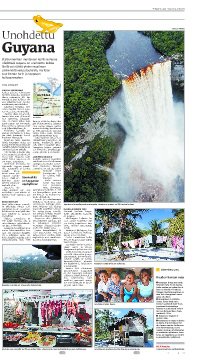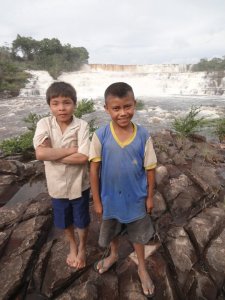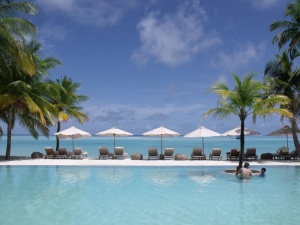Last time I wrote about how some countries are a good match for you, for reasons you often cannot explain. You just feel some kind of a connection with the place and its people. Luckily it happens quite often for me. I’m currently in El Salvador and whoa, this place was love at first sight! The ever-present Latin music, the ubiquitous street food vendors (love the delicious pupusas!) , the beautiful beaches and waterfalls, the outgoing friendly people… what’s not to like??
But this time I’m actually here to tell you what it’s like when the opposite is true and you cannot get into the swing of things at all. For me this has occurred in a couple of countries, but most strongly in Jamaica. It just wasn’t my cup of tea.
You see, Jamaica is one of those places whose mystical name conjures up images of good times and paradise beaches. It’s a country that (it seems) almost everyone dreams of visiting at some point – everyone except for me.
 I never had any particular interest in Jamaican culture, and I just might be the only non-Bob Marley fan left in the world.
I never had any particular interest in Jamaican culture, and I just might be the only non-Bob Marley fan left in the world.
 Not that I ever had anything in particular against Jamaica, it just wasn’t very high on my list of places to visit. Maybe somewhere below Angola, right above the Canary Islands (where I’ve actually already been as a kid and I think that was enough…).
Not that I ever had anything in particular against Jamaica, it just wasn’t very high on my list of places to visit. Maybe somewhere below Angola, right above the Canary Islands (where I’ve actually already been as a kid and I think that was enough…).
And yet I found myself in this island nation famous for rastafaris and reggae a couple of years ago, after the Guyanese immigration forced me to buy an onward flight ticket at the Georgetown airport. During the five minutes that I had time to think about what to do, Jamaica seemed the most logical place to fly to, as I was on my way to Cuba. (My initial plan was to take a bus from Guyana to Brazil and go from there to Venezuela, from where I could have flown to Cuba for pretty cheaply. Thanks to Guyanese immigration insisting on seeing an onward a flight ticket, that was not an option…).
Arriving at the Kingston airport in Jamaica, I was a little less than excited. Kingston doesn’t exactly have a reputation for being a friendly and safe city, quite the opposite. Before arriving in the country I happened to read an article about how armed robbers were constantly attacking the city’s hospital, in broad daylight. Police was begging for them to stop, as now the hospital staff was afraid to come to work out of fear of getting held at gunpoint. Nice. Nothing like this type of news to get you excited about arriving someplace new.
I wish I could say that I wandered around Kingston for a couple of days, and it turned out the rumors about it being dangerous were entirely wrong. But I didn’t actually stay there long enough to find out. Pretty soon after arriving I decided to head out to safer areas of the country, and only spent a couple of hours in Kingston, switching buses. From what I saw, the city definitely seemed interesting (I saw bustling markets and many street vendors) but it also seemed worthy of its bad reputation. (I spotted quite a few shady looking characters, and some guys who had clearly indulged in something stronger than the herbal essence that’s every rastafaris favorite past time. Kingston is also the first place where I actually resorted to hiding some cash in my shoes, in case I got robbed. Luckily I didn’t. That only happened later in my travels, once I got to West Africa).
As for my verdict for the rest of Jamaica – naah. Still not my favorite country. That might be because I ended up spending my week in the most touristy spots – Ocho Rios, Montego Bay and Negril. They were just way too Americanized for my taste. I felt like I was in Florida but with more rastas around. At the same time I was afraid to venture too far out due to security concerns.
 Granted, Jamaica did have beautiful beaches, with Negril’s white-sand beach with its turquoise water being my favorite. But I have traveled to enough countries where a nice playa just doesn’t cut it anymore (as much as I am a self-proclaimed beach-o-holic…). The place needs to have something more than that, some kind of character, culture or soul. And Jamaica just didn’t have it, or if it did, I simply couldn’t find it.
Granted, Jamaica did have beautiful beaches, with Negril’s white-sand beach with its turquoise water being my favorite. But I have traveled to enough countries where a nice playa just doesn’t cut it anymore (as much as I am a self-proclaimed beach-o-holic…). The place needs to have something more than that, some kind of character, culture or soul. And Jamaica just didn’t have it, or if it did, I simply couldn’t find it.
That might be because locals are often effectively banned from being on the same beaches with visitors. It also didn’t help that most of the Jamaicans I managed to meet in the touristy areas were “rent-a-rastas”, i.e. young dreadlock-donning guys looking for a Western sugar momma. Turning them down every five minutes got to be pretty boring after the first hour. Their aggressive responses were also not too uplifting (“Why, you don’t like black people?!”). All this made me feel like I just needed to get out.
But of course it’s not Jamaica’s fault that I got stuck in the touristy spots that hardly show the best side of any country. Had I allotted more time for sightseeing, I could have explored the mountainous region surrounding Kingston or gone volunteering on an ecofriendly farm run by real followers of the Rastafari religion, not rent-a-rastas, like one traveler I met. I probably would have had an entirely different experience then.
And naturally my week wasn’t terrible. I did eventually meet some nice, chilled-out locals on the Negril beach and spent hours with their adorable puppy.

I also cannot deny the beauty of the country, from mountains to rainforests to beaches. Even my Dunn’s River Falls waterfall experience improved tremendously after the tour group of about 200 Americans finally left the area. The sight of all of these folks holding hands and shouting “Yeah man!” together with their Jamaican guide just didn’t do justice to the waterfall that has been dubbed the world’s most beautiful. (In my opinion it was nice but didn’t even come close to Guyana’s Kaieuteur, and many others I have seen.) 
All this said, it would be okay to go back to Jamaica if I had some local friends or Couchsurfers to show me the ropes or if I simply wanted to lie on a pretty beach for a week. But it’s not the best place to travel to independently if you are looking to get to know the culture while staying relatively safe.
Either way, I can’t go back to Jamaica before I get my visit to Angola out of the way (which might take a while, considering how expensive that country is!)…
Have you ever visited a country that you didn’t care for much? Why was it that you felt this way? Would you be willing to give the place a second try?

























